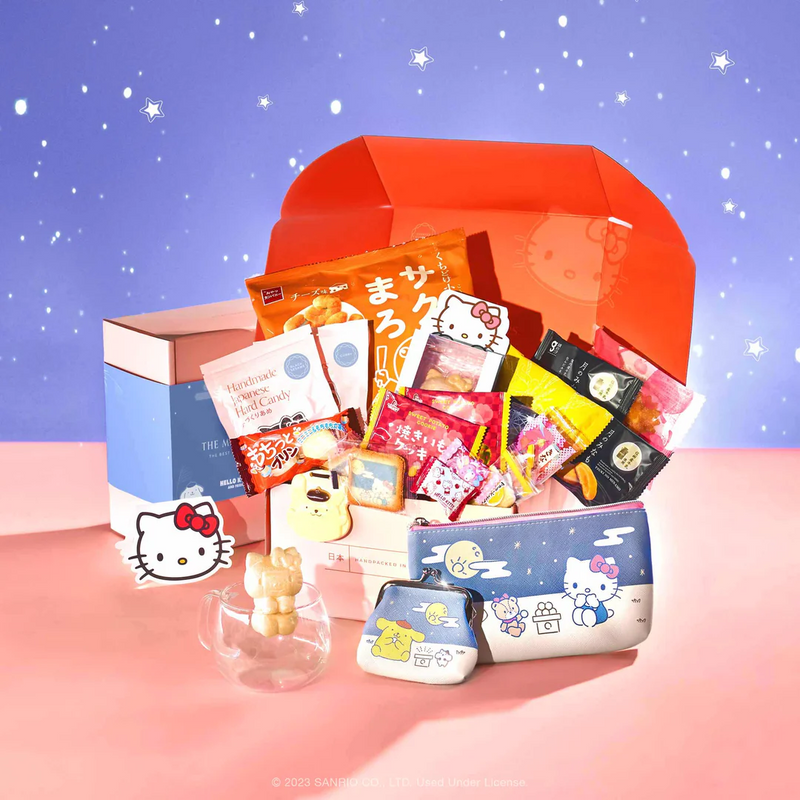A Guide to Japanese Monsters: Yokai
Dear reader, First, please let us commiserate. Since you are here, you've likely been combing the internet for some more information about yokai—a type (or several types) of supernatural being from Japanese mythology, folklore, and even individual artists’ imaginations. We’ve been seeking out creatures and explanations in the seemingly boundless world of…what should we call them? “Japanese monsters”? Or “Japanese mythical creatures?” Would “Japanese mythological creatures” do the trick? Instead of an exhaustive list of All Yokai Ever!!, we sit beside you, exhausted, with no list of yokai. We can’t tell you what makes some Japanese mythical creatures yokai as opposed to other types of shapeshifters. Please consider this brief article some companionship as you wander through the dark, uncategorized forests of Japanese monsters.
Japanese Monsters: What’s in a Name
Release all connotations of deformities, frightfulness, or even corporeality. That’s right: we’re calling ghosts and other ethereal spirits “Japanese monsters,” too! It’s really difficult to translate or systematize all the categories of Japanese mythological creatures; there are simply too many, and the rules for what makes someone a demon or a ghost are complicated and irregular. To avoid getting lost in the tall grass (perhaps not the ideal place to talk about ghouls), we’ll be using the terms “Japanese mythical creatures,” “Japanese mythic creatures,” and “Japanese monsters” interchangeably for all of our supernatural friends. Some are trolls, other ghosts, and some are vengeful household goods. Some are linked to religious figures or stories. Whenever you see references to Japanese mythical creatures or Japanese monsters, we’re talking about beings who 1.) possess supernatural powers and 2.) appear in some very interesting tales. When we speak specifically of the Japanese mythological creatures who fall under the headline “yokai,” then we will use that term to describe them.Disentangling Ourselves from the Knot that is Japanese Mythological Creatures
Why exactly are there so many Japanese mythical creatures (e.g. Japanese yokai)? To oversimplify, it’s about clashing and harmonizing belief systems: primarily Shinto (aka “kami worship” or animism), Buddhism, folktales, and mountainous islands. According to many experts, Shinto is not so much a singular religion as it is a catch-all term for various traditions of kami worship in Japan. Kami is generally translated to mean “gods” of Shintoism, but kami might also be one’s ancestors. Depending on your interpretation of the term, kami might even be Japanese mythological creatures! Regardless of who or what “kami” refers to, it’s generally a venerable and supernatural being or idea. When Buddhism arrived in Japan, it didn’t compete with local religious belief: it became enmeshed with it. Many Japanese gods and demons have several Shinto and Buddhist names, personalities, domains of expertise, and histories. Kami were folded into larger Buddhist narratives, sometimes even as the guardians of Buddhism! There’s a word for this merging: shinbutsu-konkou, translated by some as “the jumbling up of kami and buddhas.” A mountainous archipelago nation and several millennia of Chinese, Korean, Ainu, Okinawan, and other local folktales and legends naturally gave rise to some splintering and merging of supernatural beings. While this happy melding of belief systems is fascinating and even beautiful, it also makes for a rockier entrance into the world of Japanese mythological creatures.Getting Specific
There are plenty of lists of Japanese yokai online. Instead, we’ll close with how those yokai, meaning today’s yokai, came into existence. Locally specific folktales and legends made as many variations of Japanese monsters as there are imaginations. When yokai became popular subjects for visual art, they started to take on more formalized shapes, colors, and even accessories. When Japanese yokai became popular subjects for mass-printed stories (and playing cards), they took on more solid histories, too. During this time, many yokai responsible for say, drowning livestock, became a little more cuddly, more “prankster” than “murderer you while they have you in their throes.” Some of these yokai are ancient figures. Some were simply created by the artists producing said paintings and stories. Some argue these more “modern” yokai are merely pretending to be real. At some point, though, wasn’t everyone in the universe of Japanese mythical creatures imagined by someone else? With that thought, we lift ourselves from the soft log on which we’ve perched for this chat. We’ll leave you to linger in the frightening, fabulous, fable-ous world of Japanese yokai. Feel free to use your phone to look up what a kappa is. Our version is an amphibious humanoid with a dent in its head to collect water. He likes fart jokes and eating cucumbers. We wonder if the versions you meet will be so very different. By Emi NoguchiAuthor Bio







 Bokksu Snack Box
Bokksu Snack Box

























